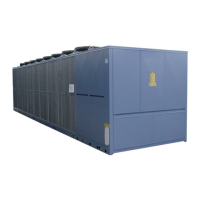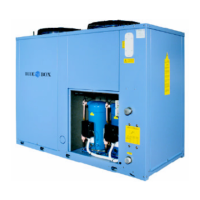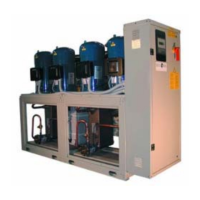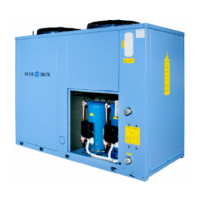How to troubleshoot a Blue Box Chiller with no compressor running and fans stopped?
- EElizabeth MarshallAug 16, 2025
If your Blue Box Chiller's compressor isn't running, the fans have stopped, and the display is off, here's what you can check: 1. **Mains Power:** Verify that the chiller is receiving mains power. 2. **Main Power Switch:** Ensure the main power switch is in the "I" position, not "O". 3. **Control Circuit Power:** Check fuses FU50, FU51, and FU52, and inspect the transformer's operation. 4. **Phase Sequence:** If relay KA5 has only a green LED lit, invert two of the phase wires of the power supply line. Both green and yellow LEDs should light upon restart. 5. **Relay KA5 LEDs:** If relay KA5 has both green and yellow LEDs off, check fuse FU56. If the fuse is okay, replace the phase sequence relay.




